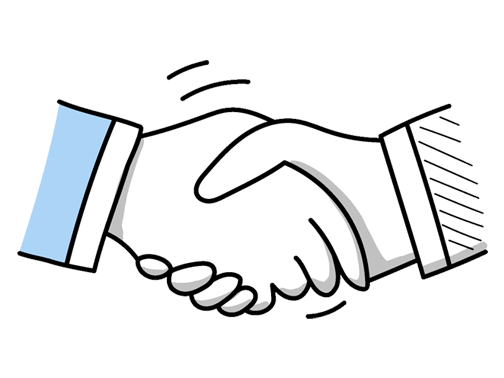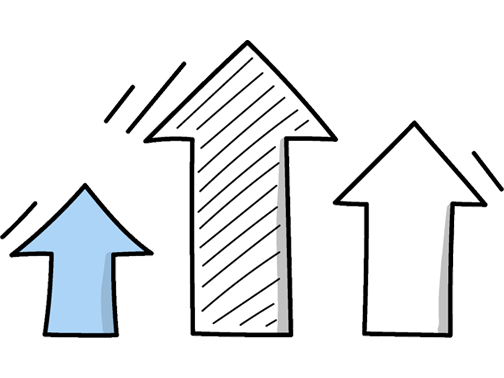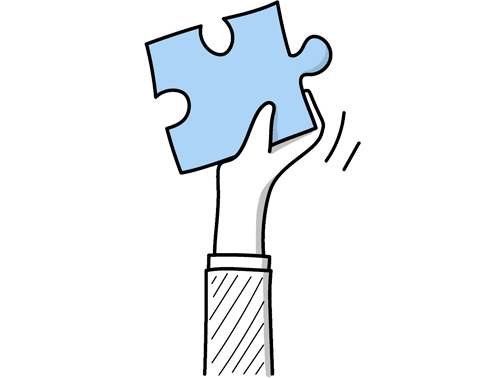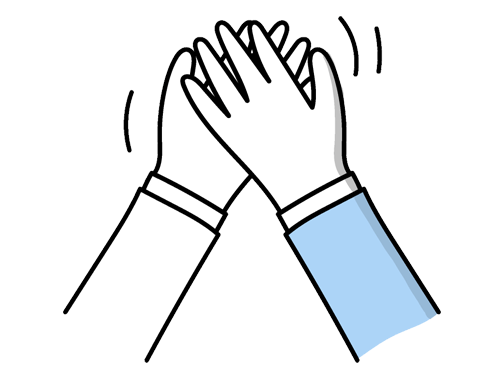Landscape Architect Interview Questions (2025 Guide)
Find out common Landscape Architect questions, how to answer, and tips for your next job interview
Practice Interviews Online - Identify your strengths and weakness in a realistic Landscape Architect mock interview, under 10 minutes
Practice Now »Landscape Architect Interview Questions
Questions like this assess your technical proficiency and how effectively you use design tools to bring your ideas to life. In your answer, clearly describe your experience level with specific CAD software and other tools, highlighting how they’ve helped you create detailed, accurate landscape designs.
Example: I’ve worked extensively with CAD software like AutoCAD and Vectorworks to create detailed site plans and planting layouts. In one project, I used SketchUp to develop 3D visualizations that helped clients better understand the design. I also integrate tools like Adobe Photoshop and Illustrator to enhance presentations, ensuring the designs are clear and engaging. Overall, these tools are essential in bringing concepts to life efficiently.
Hiring managers ask this to see if you are proactive about keeping your skills current and can integrate new technologies into your work. You should say that you regularly follow industry publications, use the latest design software, and pursue ongoing training to stay ahead in your field.
Example: I regularly follow industry journals and attend events like the Landscape Institute’s conferences to keep up with new tools and methods. When I discover useful technology, such as 3D modelling software or sustainable materials, I test how it can improve my designs on current projects. Staying curious and investing time in training helps me deliver innovative and practical solutions tailored to each site’s needs.
Hiring managers ask this question to see if you can translate complex design ideas into understandable terms and maintain strong client relationships. You need to say that you listen actively, confirm understanding by summarizing, and use visuals or models to make ideas clear.
Example: I focus on listening carefully to understand clients’ visions and concerns from the start. I keep communication open and straightforward, regularly sharing sketches or ideas to make sure we’re aligned. For example, I often use visual updates to help clients see progress and feel involved, which builds trust and prevents misunderstandings. It’s all about being approachable and responsive throughout the project.
Questions like this assess your ability to maintain clear communication and build trust with clients, ensuring smooth project progress. You should say that you keep clients informed with regular updates, address challenges proactively, and respond promptly to their concerns.
Example: I keep clients informed from day one, explaining each phase and any possible hurdles we might face. When an unexpected issue arises, I make sure to address it promptly, so there are no surprises. Listening closely to their concerns also helps me tailor solutions that align with their vision. For example, on a recent park project, regular updates and open dialogue helped us adjust designs smoothly and keep everyone confident in the outcome.
Questions like this assess your ability to manage time, communicate clearly, and solve problems under pressure. You need to explain how you prioritized tasks, kept everyone informed, and adapted to challenges while juggling multiple projects.
Example: Sure! Here’s a concise and natural-sounding response for your interview:
"In a recent role, I juggled three different landscape projects with overlapping deadlines. I stayed organised by setting clear priorities and regularly updating both the team and clients to keep everyone aligned. When unexpected site issues arose, I quickly adjusted plans and delegated tasks, ensuring progress continued smoothly without compromising quality.
Employers ask this to see if you can respectfully integrate important cultural or historical features into your designs, showing sensitivity and creativity. In your answer, describe a specific project where you researched and thoughtfully included these elements to enhance the site’s meaning and community connection.
Example: In a recent project near York, I worked closely with local historians to integrate the area's medieval heritage into the park design. We used traditional materials and incorporated motifs inspired by nearby ancient structures, creating a space that feels connected to its past while serving modern needs. It was rewarding to blend history with contemporary landscape design, making the space meaningful for both residents and visitors.
Questions like this assess your technical skills and how you apply site data to inform your designs. You should explain that you use tools like GIS and mapping software to analyze topography and soil, and describe how you integrate these findings to adapt your landscape designs to environmental conditions.
Example: When approaching site analysis, I start by gathering detailed environmental data—like soil quality, sunlight patterns, and drainage—often using tools such as GIS mapping and drone surveys. I then observe how these factors interact on the ground to inform design choices. For example, understanding natural water flow helps me position planting to reduce erosion while enhancing aesthetics, ensuring the design responds thoughtfully to the site’s unique conditions.
Interviewers want to see if you can prioritize eco-friendly solutions while meeting practical and financial limits. You need to explain that you evaluate sustainable options that align with the client’s goals and adjust designs to fit the budget without compromising key environmental benefits.
Example: Balancing sustainability with client needs and budgets is about finding practical, creative solutions. I focus on understanding what matters most to the client and then explore materials or designs that offer value over time, like native planting that reduces maintenance costs. It’s about collaboration—being transparent about trade-offs while keeping the project’s environmental impact in mind, ensuring the design feels both responsible and rewarding.
Questions like this assess your problem-solving skills and adaptability, essential traits for a landscape architect facing site changes or client requests. You need to explain that you stay calm, assess the situation quickly, and communicate effectively to adjust plans while keeping the project goals in focus.
Example: When unexpected challenges arise, I stay calm and assess the situation carefully. For example, on a recent project, a sudden change in planning permission required redesigning part of the layout. I collaborated with the team to explore alternatives, ensuring the design still met client needs while complying with regulations. Flexibility and clear communication help me turn surprises into opportunities rather than setbacks.
This interview question aims to assess your awareness of environmental impact and your commitment to eco-friendly design. You need to explain how you use native plants, water-efficient irrigation, and materials that minimize harm to the environment in your projects.
Example: In my designs, I focus on native planting to support local ecosystems and reduce water use. I also prioritize permeable materials to manage rainwater naturally, which helps reduce runoff. Incorporating green roofs or rain gardens where possible adds both beauty and function, improving biodiversity and air quality. It’s about creating spaces that work with nature, not against it, ensuring lasting benefits for both people and the environment.
Interviewers want to see that you are proactive and committed to continuous learning in a rapidly evolving field. You need to explain that you regularly read industry publications, attend workshops or webinars, and engage with professional networks to stay current on sustainable landscape architecture trends and technologies.
Example: I keep up with sustainable landscape architecture by regularly reading industry journals and following thought leaders on social media. Attending local seminars and workshops helps me see new ideas in action. For example, I recently participated in a webinar on urban green infrastructure, which inspired me to explore more innovative water management solutions in my designs. Staying connected with both professionals and emerging research keeps my approach fresh and informed.
What they want to know is how you ensure the design truly reflects the client’s vision and fits the site conditions. You need to explain that you actively listen to the client’s ideas, research the site thoroughly, and communicate your concepts clearly while seeking ongoing feedback.
Example: When starting a project, I like to have open conversations with clients to really grasp what they envision and what matters most to them. I also spend time exploring the site and its surroundings to see how their ideas can fit naturally. Throughout the design process, I keep checking in with them to share progress and make sure we’re aligned, which helps create spaces that truly reflect their goals.
This interview question aims to assess your ability to create designs that are both beautiful and practical, reflecting the core responsibilities of a landscape architect. You need to explain how you prioritize user needs and environmental factors while incorporating visual appeal to ensure your designs are both functional and aesthetically pleasing.
Example: Balancing aesthetics and functionality starts with understanding how people will use the space. I focus on creating designs that are visually inviting but also practical—like choosing plantings that thrive locally and paths that guide movement naturally. For example, in a recent park project, I combined artistic layouts with accessible seating and clear sightlines, ensuring the space feels welcoming and works well for everyone.
This question helps the interviewer assess your practical experience and understanding of sustainable design principles. You need to clearly describe a specific project, highlight the green infrastructure elements you used, and explain the positive environmental or community impact of your work.
Example: Certainly. On a recent urban park project in Manchester, I integrated rain gardens and permeable pavements to manage stormwater naturally. This not only enhanced biodiversity by attracting local wildlife but also reduced flooding risk. Collaborating closely with the local council, we created a space that’s both functional and inviting, proving how thoughtful green infrastructure can benefit communities and the environment simultaneously.
Hiring managers ask this question to understand how you think about creating spaces that are both beautiful and practical while respecting the environment and client needs. You should explain your approach to balancing natural elements with human use, emphasize sustainability practices like using native plants, and highlight how you tailor designs to reflect client goals and cultural context.
Example: My design approach balances beauty with practicality, crafting spaces that people can truly enjoy and use. I always consider the environment, aiming to enhance natural features while minimising impact. Collaborating closely with clients helps me reflect their vision and the local culture in the design. For example, in a recent project, I incorporated native plants to support biodiversity and created seating areas that invite community interaction.
Hiring managers ask this to understand your creative process and what drives your design choices. You need to explain how nature, culture, and the specific environment influence your work to create functional and beautiful spaces.
Example: What inspires my landscape designs is a blend of the site's natural features and the community’s way of life. For example, I often draw from local flora and the rhythm of nearby public spaces to create environments that feel both inviting and sustainable. I believe good design should respect nature while enhancing how people interact with their surroundings, making each project unique and meaningful.
This question assesses your ability to plan and control financial resources to keep projects on track. You need to say you create detailed budgets by breaking down costs, monitor expenses regularly against forecasts, and communicate budget updates clearly with clients and teams.
Example: To manage project budgets effectively, I start by breaking down costs realistically based on thorough research. Throughout the project, I keep a close eye on spending, adjusting plans as needed to avoid surprises. I also make it a point to keep everyone involved informed about the budget’s status and any challenges we face. For example, on a recent park design, regular updates helped us stay on track despite unexpected material costs.
What they want to know is if you understand how climate affects your design choices and can adapt your plans accordingly. You need to explain that you assess local climate factors like rainfall and temperature to select appropriate plants, use native species to ensure sustainability, and balance beauty with ecological function to create resilient, attractive landscapes.
Example: When designing for different climates, I first consider local conditions like rainfall, temperature, and soil types to ensure the landscape thrives naturally. I adapt plant choices and materials to suit these factors while creating spaces that feel inviting and purposeful. For example, in a wet UK setting, I might focus on drainage and native plants that absorb water, balancing beauty with resilience and environmental care.
This interview question aims to assess your attention to detail and proficiency with technical tools, which are crucial for creating reliable landscape designs. You need to say that you double-check measurements, use precise drafting software, and review your work carefully to maintain accuracy and precision.
Example: To ensure accuracy in my technical drawings, I rely on careful site measurements combined with precise digital tools like CAD software. I always cross-check dimensions against site data and consult with engineers when needed. For example, in a recent project, I caught a minor discrepancy early by revisiting the survey, which saved time during construction. Attention to detail and collaboration really help keep everything precise.
Hiring managers ask this to see if you can organize complex projects and keep them on track, ensuring timely delivery. You need to say that you create detailed schedules, communicate regularly with your team and stakeholders, and adapt plans proactively when challenges occur.
Example: To keep projects on track, I start by breaking tasks into clear, manageable steps and setting realistic milestones. Regular check-ins with the team help us stay aligned and address any issues early. When unexpected changes arise, I reassess priorities and adapt plans quickly to keep progress steady. For example, on a recent site redesign, timely communication and flexible scheduling helped us meet the deadline despite a late permit delay.
Questions like this assess your ability to communicate and collaborate effectively with multiple parties to ensure a project runs smoothly. You need to explain how you coordinate schedules, clarify expectations, and resolve conflicts to keep everyone aligned and projects on track.
Example: In my previous projects, I regularly worked with contractors and clients to ensure designs were feasible and aligned with everyone’s expectations. For example, on a recent urban park project, I held weekly site meetings to address challenges early, which helped keep the timetable on track and maintain good communication. I find that listening carefully and being clear about priorities makes collaboration smoother and outcomes stronger.
What they want to know is how you value and integrate client input to create designs that truly meet their needs. You should explain that you actively listen to client feedback, adapt your designs accordingly, and maintain clear, ongoing communication to ensure their satisfaction throughout the project.
Example: When I receive client feedback, I make sure to listen carefully and really understand their vision. I then revisit my designs to incorporate their ideas while balancing practicality and aesthetics. Throughout the process, I keep an open dialogue, often sharing sketches or options to make sure we’re aligned. For example, on a recent project, adjusting planting choices based on client preferences led to a more personalized and successful outcome.
Hiring managers ask this to see how you handle conflict and maintain professionalism under pressure. You need to describe a specific situation, explain your approach to understanding the client's concerns, and show how you reached a positive outcome through communication and problem-solving.
Example: Certainly. Once, a client was hesitant about incorporating sustainable planting due to maintenance concerns. I listened carefully, then shared examples of low-maintenance native species that thrive locally, enhancing both aesthetics and ecology. By tailoring the design to their preferences and concerns, we found a balanced solution that satisfied their vision and environmental goals. This approach built trust and made the project a success.
Questions like this assess your commitment to sustainability and your practical knowledge of eco-friendly design practices. You should explain how you choose sustainable materials, implement water- and energy-saving features, and promote biodiversity through native plants.
Example: In my projects, I focus on selecting locally sourced, eco-friendly materials to reduce carbon footprints. I design landscapes that use native plants and efficient irrigation to conserve water, while incorporating features that support local wildlife habitats. For example, creating pollinator-friendly gardens not only boosts biodiversity but also enriches the community’s connection to nature. This balanced approach helps deliver spaces that are both beautiful and environmentally responsible.
Employers ask this to see how organized and detail-oriented you are in translating design ideas into actionable plans. You should clearly outline your steps from site analysis and client input to drafting, emphasize using tools and checks for accuracy, and mention how you adapt designs to solve issues along the way.
Example: When creating construction documents, I start by thoroughly reviewing the design intent and site conditions. I then develop detailed drawings and specifications, regularly cross-checking dimensions and materials to avoid errors. If challenges arise, like unforeseen site constraints, I collaborate with engineers or contractors to find practical solutions. For example, on a recent project, adjusting drainage details early saved time and costs during construction. This careful, iterative approach ensures clarity and buildability.
Ace your next Landscape Architect interview with even more questions and answers
Common Interview Questions To Expect
The interviewer is looking to see how you found out about the job opening and what sources you use to stay informed about opportunities in your field. You can mention job boards, networking, company website, referrals, etc.
Example: I actually came across this position on a job board while I was actively looking for new opportunities in the field of landscape architecture. I also follow the company's website and social media pages to stay updated on any openings they may have. Networking with other professionals in the industry has also helped me discover potential job leads.
The interviewer is looking for insight into your long-term aspirations, motivation, and commitment to the field of landscape architecture. Be honest and specific about your goals and how they align with the company's values and objectives.
Example: My career goal is to become a senior landscape architect and eventually start my own design firm. I am motivated by creating sustainable and innovative outdoor spaces that enhance the environment and people's lives. I believe my passion for design and commitment to excellence align well with the company's values of creativity and environmental stewardship.
Candidates can answer by stating a specific salary range, mentioning their flexibility, or asking about the company's salary range. Interviewers are looking for candidates who are realistic, confident, and have done their research on industry standards.
Example: I'm looking for a salary in the range of £30,000 to £40,000, but I'm open to negotiation based on the overall compensation package. I've done some research on industry standards and believe this range is competitive for someone with my experience and skills. Can you provide me with more information on the company's salary range for this position?
Interviewers are looking for honesty, professionalism, and a positive attitude in your response. You can mention career growth, seeking new challenges, company restructuring, or personal reasons.
Example: I left my last job because I felt like I had reached a plateau in my career and was looking for new challenges to continue growing as a landscape architect. The company was also going through some restructuring which made me reassess my career goals. Overall, I felt it was the right time for me to make a change and explore new opportunities.
Interviewees can answer by acknowledging a mistake, explaining how they rectified it, and highlighting lessons learned. Interviewers are looking for honesty, accountability, problem-solving skills, and ability to learn from mistakes.
Example: Yes, I once miscalculated the measurements for a project which resulted in a delay. I immediately informed my team, worked overtime to correct the error, and implemented a double-check system to prevent similar mistakes in the future. It taught me the importance of attention to detail and communication within the team.
Company Research Tips
The company's website is a goldmine of information. Look for details about the company's history, mission, and values. Pay special attention to their portfolio of projects, which will give you an idea of their design style and the types of clients they work with. Also, check out their 'News' or 'Blog' section to stay updated with their recent projects and achievements.
Tip: Look for any specific language or phrases they use to describe their work or values. Using similar language during your interview can show that you're a good cultural fit.
Social media platforms like LinkedIn, Facebook, Instagram, and Twitter can provide insights into the company's culture and the way they interact with their clients and the public. You can also find information about their recent projects, events, and any awards or recognitions they have received. LinkedIn can also give you an idea of the company's size and the backgrounds of their employees.
Tip: Follow the company on these platforms to show your interest. Engage with their posts if appropriate.
Look for any mention of the company in industry news and trade publications. This can give you an idea of their reputation in the industry, their involvement in major projects, and any innovative practices they're known for. Publications like 'The Landscape Institute' and 'The Architects' Journal' can be particularly useful.
Tip: Use this information to show your knowledge of the industry and to ask informed questions during your interview.
Reach out to current or former employees, or others in the industry who may have worked with the company. They can provide insider information about the company culture, the types of projects they typically work on, and what they look for in employees. LinkedIn can be a good platform for this type of research.
Tip: Be respectful and professional in your outreach. Make it clear that you're interested in learning more about the company, not just trying to get a job.
What to wear to an Landscape Architect interview
- Smart casual attire
- Clean, well-fitted jeans or trousers
- Polished shoes, not trainers
- A neat, collared shirt or blouse
- Lightweight blazer or smart cardigan
- Avoid overly bright or flashy colours
- Ensure clothes are ironed and clean
- Minimal and professional accessories
- Weather-appropriate outerwear
- Neat and professional hairstyle
- Light, natural makeup for women





